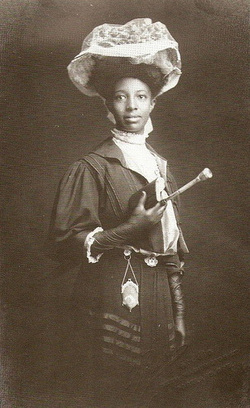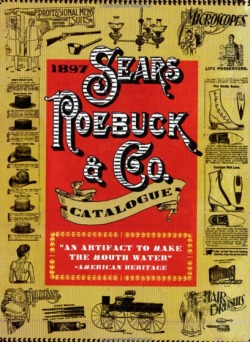As part of my Sears Catalog/Victorian Christmas Shopping Unit, I was able to interview another expert about corsets - this time, Marcy Engleman, a medical historian with the Philadelphia College of Physicians and the Mutter Museum in Philadelphia.
0 Comments
For the second year in a row, I had my 8th graders research 19th Century primary sources and shop for historical Americans from the 1897 Sears-Roebuck Catalog.
As usual, the most successful part of this project was my two-day lead-up to it, where I delved into topics like drug use and Victorian underwear. The project itself was a mixed success. The students were exposed to primary sources and definitely enjoyed the project, but clearly, some students put more effort into it than others. Some students, for instance, were confused about which person they were actually shopping for, which could have been clarified by looking at their photographs. Other students however, put a lot of thought into their gifts and used the information they had about their people to buy surprising and delightful gifts that their people would have loved. Overall, I'm not unhappy about how this project turned out this year.  I keep a classroom wish list on Amazon.
I started it a few Christmases ago, when I received one coffee mug too many, filled with Hershey's Kisses. The idea is that if parents or students feel the need to give me something, they have a list of things that we could really use in my classroom - everything from books to batteries to plastic spoons. I also include the link to this wish list in the letter my colleagues and I send to parents at the beginning of the year, when we send out a request of classroom supplies. One of the items on this year's list was a reprinted edition of the 1897 Sears Roebuck Catalog. I've done a lesson on this catalog for several years, but I've always wanted enough copies for my students to be able to play around with it. So, I made a note on my wish list, that it would be nice if, over the next several years, I could gradually build up a classroom set of these catalogs. On the second week of school, I found a giant cardboard carton outside my classroom door. When I opened it, I found that the parents of one of my students had actually bought us fifteen copies of the catalog. Which left me in the position of having to figure out what to do with them. (Did I mention that the mother is on the School Board?) As part of our "A History of America in Some Objects" project, here are more of my thoughts on why the 1897 Sears Roebuck Catalog is pretty awesome: 1897 Sears Roebuck Catalog from John Fladd on Vimeo. Links:
 For the past several years, I've built a 2-3 day lesson on ☜ this book - a reprint of the 1897 Sears Roebuck Catalog. It is one of the most deceptively seductive tools for student engagement that I've found (a gateway drug to American History, if you will). Most students look briefly at the cover or hear a description of this reproduction catalog and immediately write it off as hopelessly boring.
And yet... I have a handful of different Sears Catalog reprints in my classroom and if I scatter them around on student desks before class begins, within moments, students have been totally sucked into them. Yes, the boys go immediately to the section on shotguns. Yes, most of the girls go immediately to saddles and horse-tack. So what? It's American History and they're engrossed. (And they rarely stay in those sections.) The items being sold give a unique view into consumer culture at the turn of the 20th Century and into Victorian culture generally. This catalog wasn't originally printed to teach anybody anything - it was there to sell stuff. They only sold things that people wanted to buy. The fact that people wanted to buy them tells us a lot. For instance... |
| Teacher Toys |
|
 RSS Feed
RSS Feed